Wandering through the gardens of Villa d’Este in Tivoli feels like stepping into a Renaissance dream where water comes alive. I found myself mesmerized by the ingenious system of 51 fountains, 64 waterfalls, and nearly 400 spouts—all powered simply by gravity! These magnificent water features represent one of the most remarkable examples of Renaissance culture and engineering genius, showcasing human creativity without using a single electric pump.
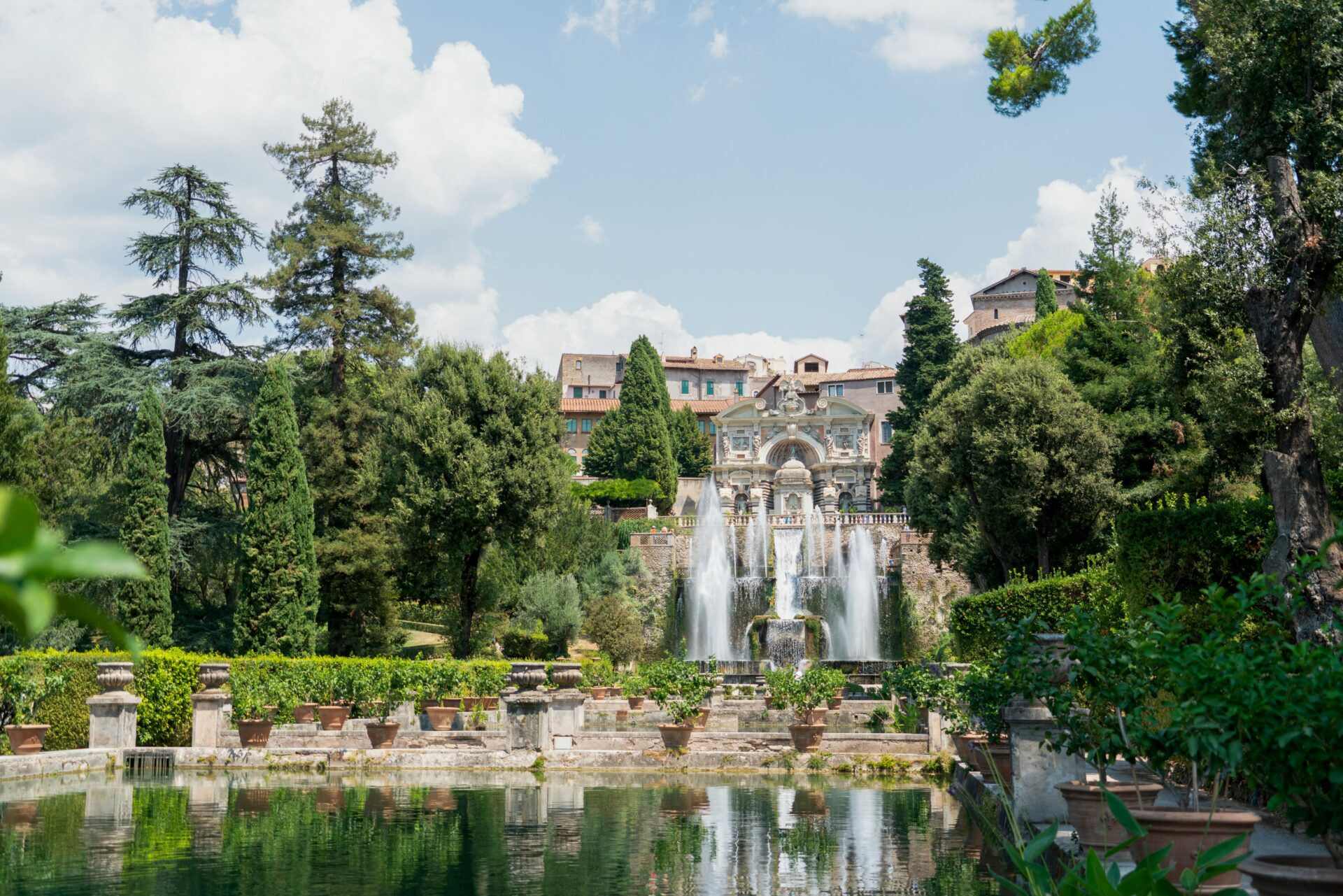
The first time I turned a corner and saw the Water Organ fountain, I couldn’t believe my eyes. Water jets dance in perfect harmony while the organ plays melodies using only the force of flowing water. What makes Villa d’Este truly special is how it transforms a basic element like water into art, creating playful displays that have delighted visitors for over 400 years.
As I explored the terraced hillside gardens, I discovered that Villa d’Este isn’t just beautiful—it’s revolutionary.
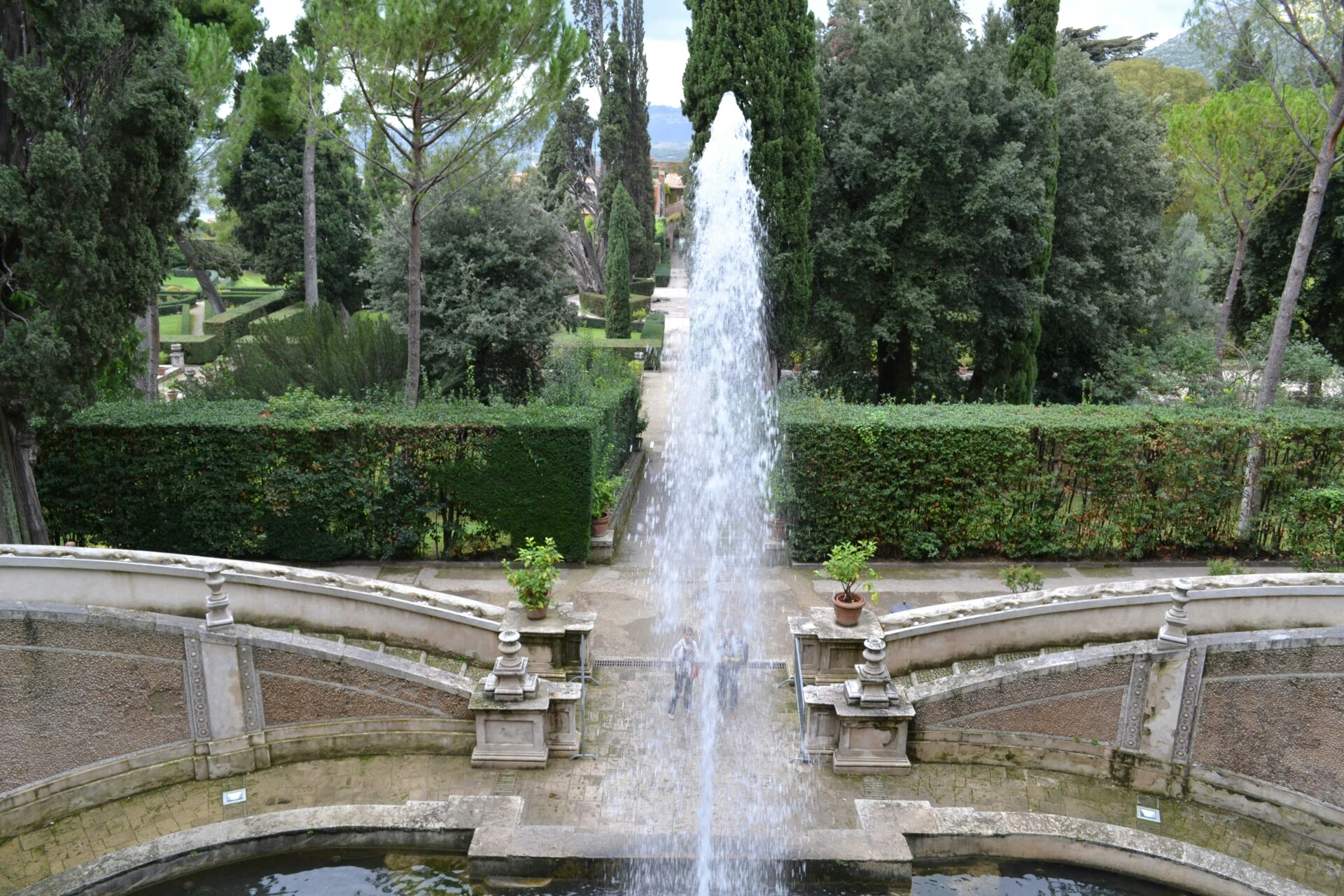
The 16th-century villa and its surrounding landscape near Rome demonstrate how Renaissance designers blended architecture, art, and nature into a seamless experience.
I recommend wearing comfortable shoes and bringing a waterproof camera—you might get splashed as you admire these playful fountains up close!
Exploring the History of Villa d’Este
Villa d’Este stands as one of Italy’s most remarkable Renaissance treasures, combining architectural brilliance with innovative garden design. This UNESCO World Heritage site has captivated visitors for centuries with its magnificent water features and historical significance.
The Renaissance Villa and Its Origins
The story of Villa d’Este begins in 1560 when Cardinal Ippolito II d’Este, after failing to become pope, decided to create something extraordinary. He transformed a former Benedictine monastery in Tivoli, near Rome, into his dream villa.

The Cardinal commissioned architect Pirro Ligorio and artist Alberto Galvani to design both the villa and its spectacular gardens. Construction took nearly 20 years to complete!
Walking through the villa today, I’m always struck by how it perfectly embodies Renaissance ideals.
The building showcases beautiful frescoes depicting classical mythology and the d’Este family history. These artistic elements weren’t just for show – they demonstrated the Cardinal’s wealth, education, and power to his visitors.
The Legacy of Water Games and Garden Design
What truly sets Villa d’Este apart is its revolutionary garden design. The terraced gardens cascade down a steep hillside, featuring over 500 fountains, pools, and water jets – all powered entirely by gravity!
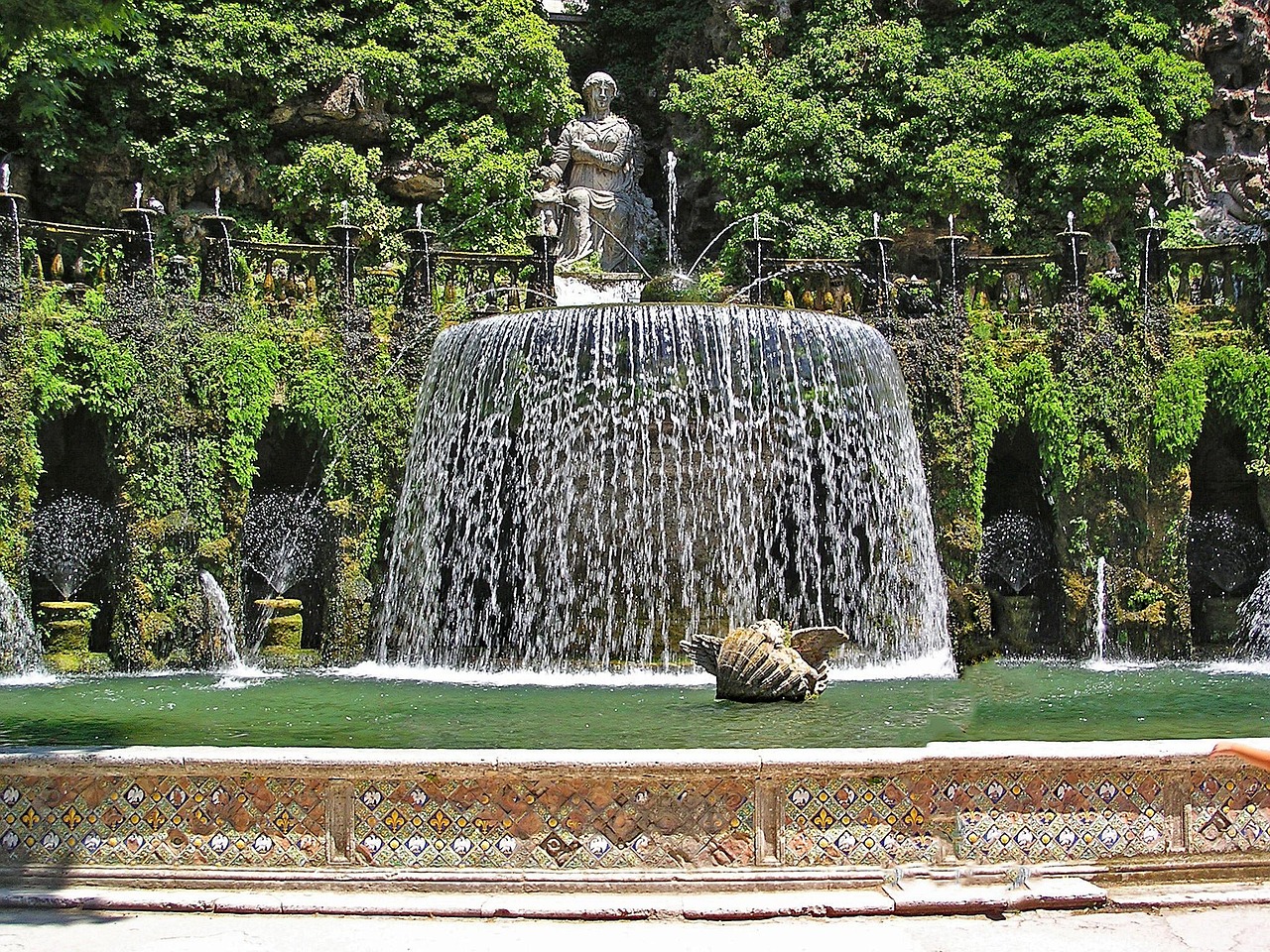
I find it amazing that these hydraulic engineering marvels were created in the 16th century without modern technology. The Avenue of a Hundred Fountains and the magnificent Water Organ Fountain show incredible innovation for their time.
The gardens became a model that influenced European garden design for centuries afterward. They represent one of the first giardini delle meraviglie (gardens of wonder) that combined art, nature, and technology.
When I visit, I’m particularly drawn to the Oval Fountain with its dramatic cascades and the enchanting Fountain of the Dragons, created specifically for a visit by Pope Gregory XIII in 1572. Each water feature tells a story through mythology and symbolism.
The Architectural Marvel of Villa d’Este’s Gardens
The gardens of Villa d’Este represent one of the greatest achievements in Renaissance landscape design, where architecture and nature blend in perfect harmony. The ingenious use of the hillside terrain created a masterpiece that continues to astonish visitors nearly 500 years after its creation.
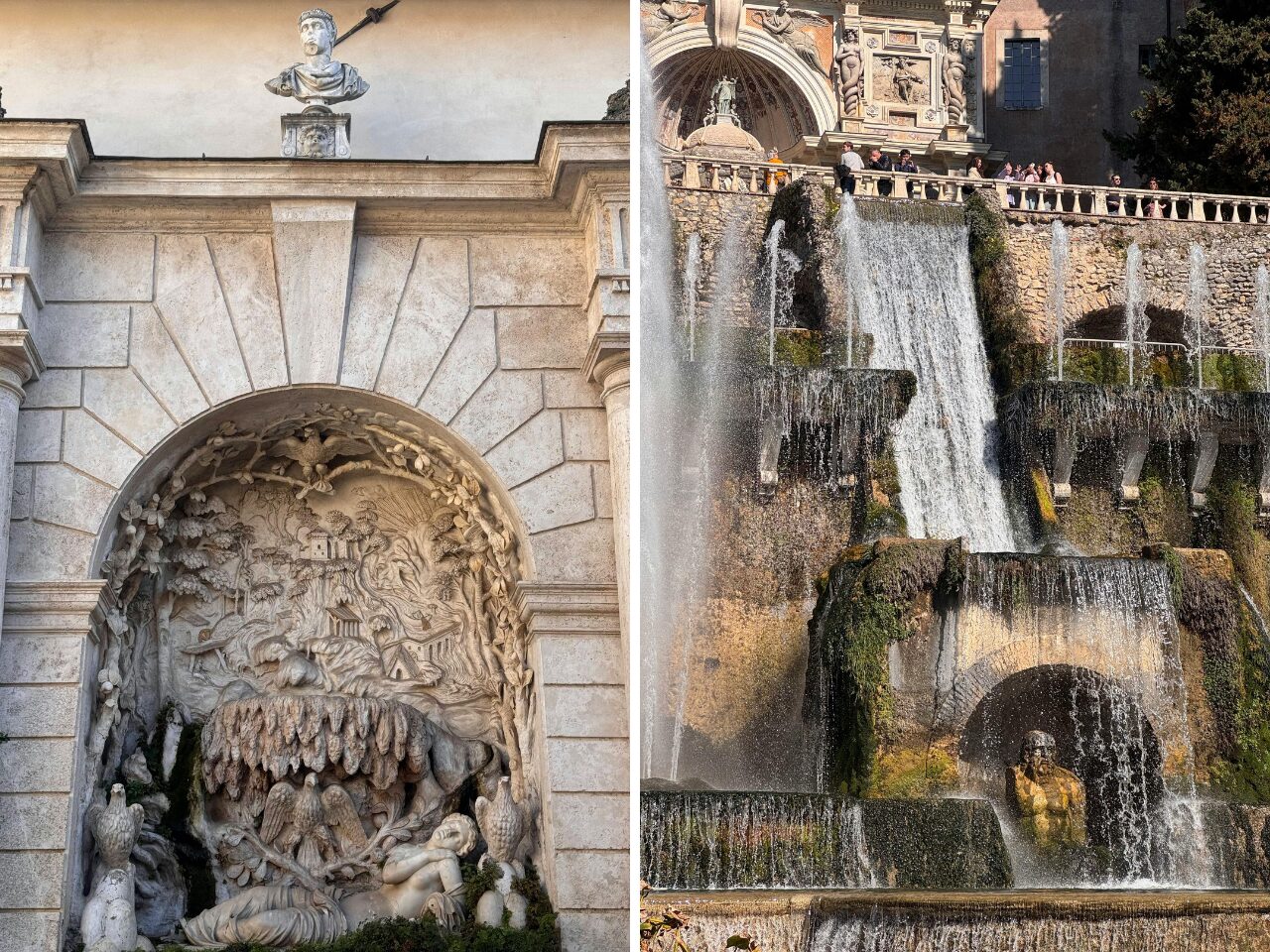
Garden Layout and Water Marvels
When I first stepped into Villa d’Este’s gardens, I was immediately struck by the brilliant terraced design. The architect Pirro Ligorio created this masterpiece in 1565 for Cardinal Ippolito d’Este, transforming a steep hillside into cascading garden levels.
Each terrace offers a different experience and vista. The gardens feature over 500 jets, fountains, and water features – all working without pumps!
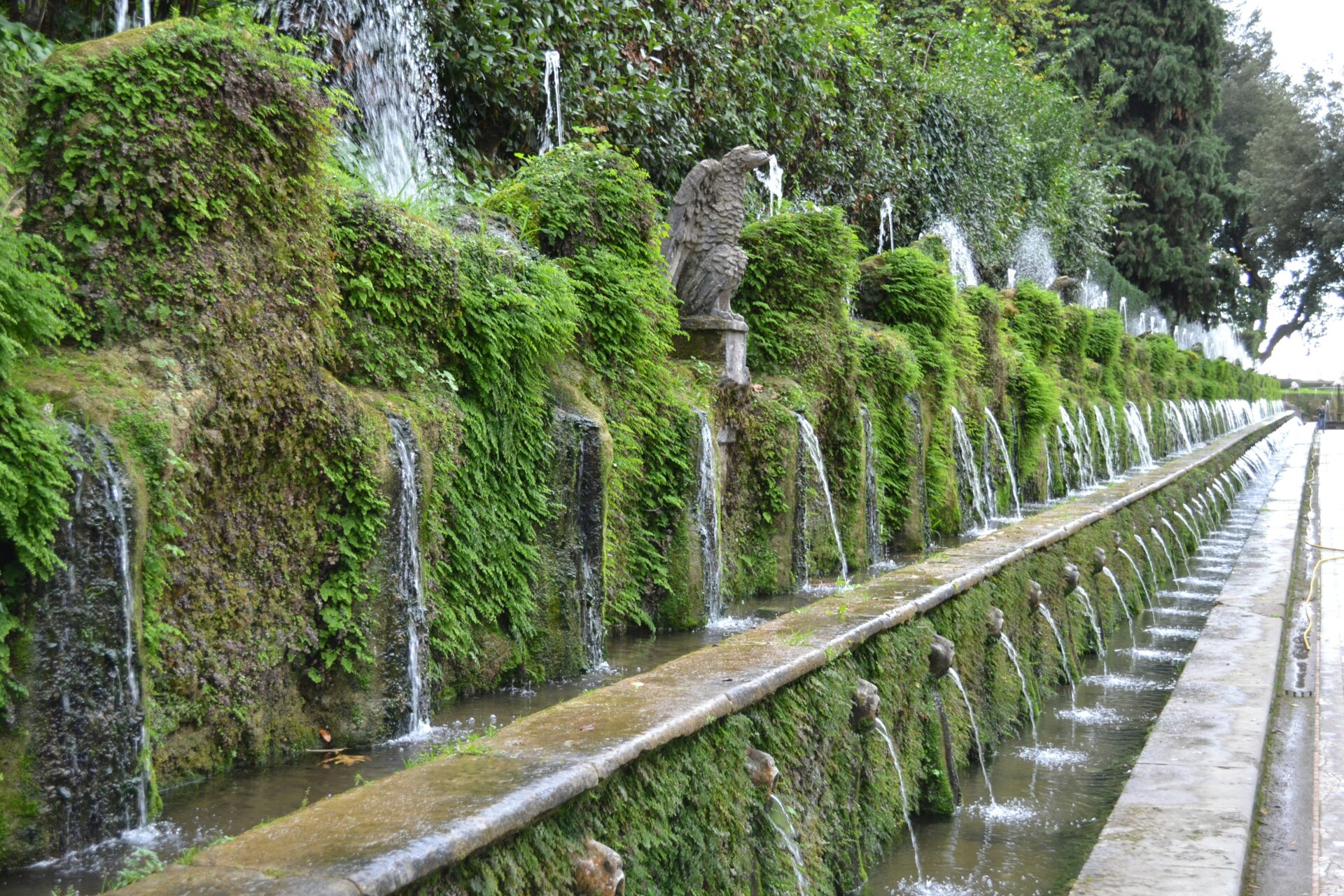
My favorite is the Avenue of a Hundred Fountains, where water spouts from a long row of eagles, boats, and lilies.
The Fountain of the Organ amazes me every time – it actually plays music using only water pressure. I’ve spent hours wandering the pathways, discovering hidden grottos and water-themed surprises around every corner.
Innovative Hydraulics and Aesthetic Appeal
What truly blew me away was learning how the entire water system works by gravity alone. The designers diverted water from the River Aniene through a complex network of pipes, channels, and reservoirs to power all those spectacular fountains.
This engineering marvel uses the natural slope of the hill to create water pressure. No electricity or modern pumps – just Renaissance ingenuity! The water follows carefully calculated paths to create different effects throughout the gardens.
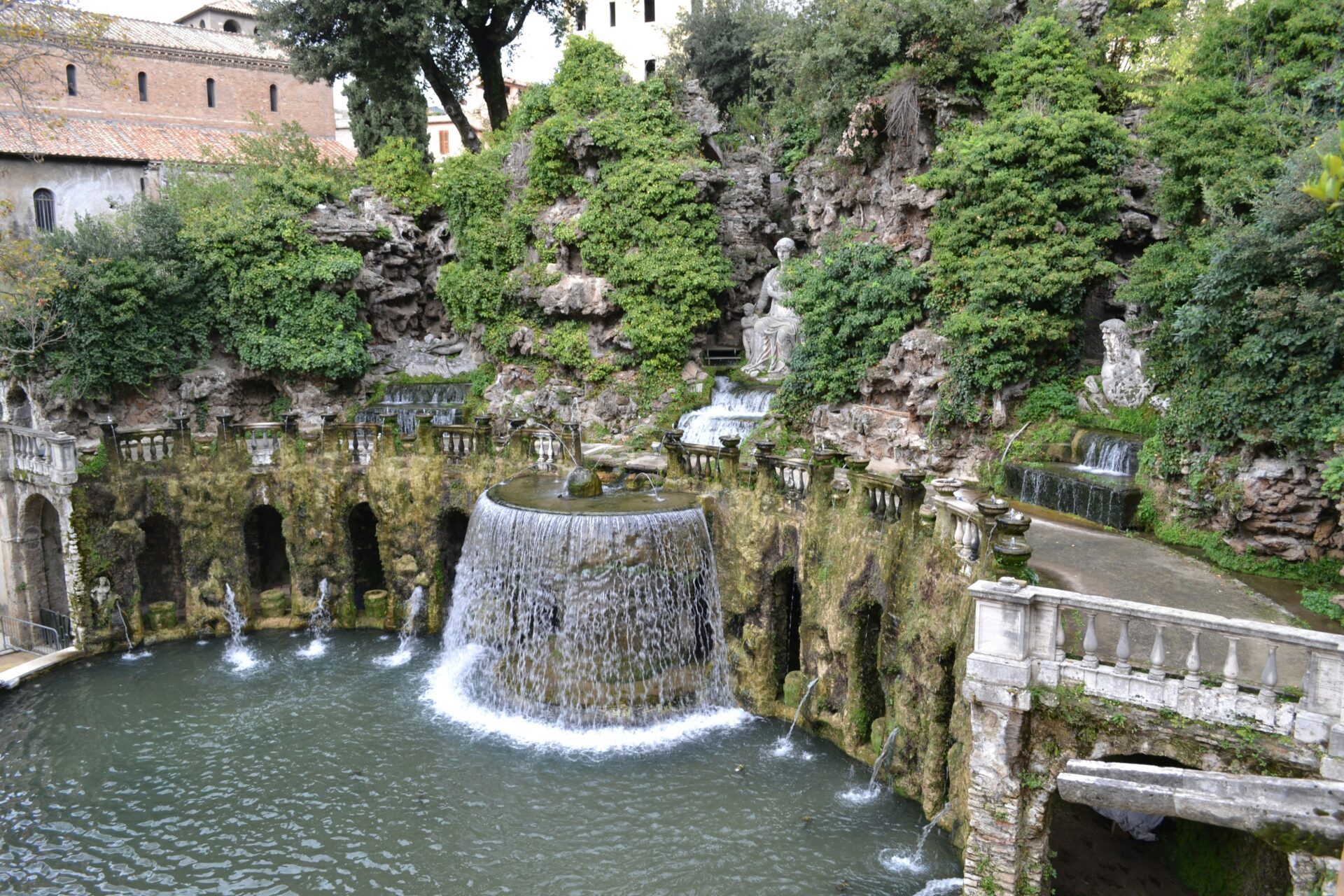
I love how the architects balanced technical precision with artistic beauty. The Oval Fountain’s powerful jets contrast with the delicate mists in the Fountain of Venus. Each water feature was positioned to frame specific views or create special lighting effects at different times of day.
These beautiful gardens aren’t just pretty – they’re a testament to human creativity working with nature rather than against it.
The Spectacular Fountains of Villa d’Este
Villa d’Este’s gardens showcase an extraordinary collection of water features that have amazed visitors for centuries. With over 51 fountains, 64 waterfalls, and hundreds of water jets, the Renaissance masterpiece uses gravity alone to power its magnificent aquatic displays.
Iconic Fountains and Their Stories
The Organ Fountain stands as the villa’s breathtaking centerpiece. I was mesmerized watching it play actual musical notes using only the power of flowing water. It’s a Renaissance marvel of engineering and art combined!

The Avenue of a Hundred Fountains stretches across the garden, creating a mesmerizing corridor of water jets and small basins. Walking alongside it, I felt transported back to the 16th century when Cardinal d’Este first envisioned this watery paradise.
Don’t miss the oval Fountain of the Dragons with its fierce water-spitting creatures. Legend says it was created overnight to impress Pope Gregory XIII, whose coat of arms featured a dragon.

The Neptune Fountain cascades dramatically down the garden’s slope. Its powerful jets create a spectacular water theater that perfectly captures the Renaissance fascination with classical mythology.
The Artistic Themes of Water Displays
The fountains brilliantly express Renaissance artistic themes through water. Classical mythology comes alive with nymphs, gods, and legendary creatures adorning many displays. I particularly loved the Venus Fountain with its delicate feminine imagery.
Water itself becomes art through ingenious designs. Some fountains create gentle whispers, while others produce dramatic roars. The play of light on water creates ever-changing visual effects throughout the day.

The gardens showcase the Renaissance mastery of perspective and proportion. Each fountain is perfectly positioned to create visual harmony with the surrounding landscape. Walking the terraced paths reveals carefully planned viewpoints and surprises at every turn.
Many fountains incorporate clever water jokes called “giochi d’acqua” (water games). I accidentally triggered hidden jets designed to spray unsuspecting visitors – a playful Renaissance prank that continues delighting tourists today!
Visiting Villa d’Este: A Traveler’s Guide
Planning a visit to Villa d’Este requires some preparation to fully enjoy its magnificent fountains and gardens. I’ve discovered a few insider tips and travel routes that can make your experience truly memorable.
Best Times to Visit and Travel Tips
I found that spring and early fall offer the most pleasant weather for exploring Villa d’Este. April through June showcases blooming gardens, while September brings comfortable temperatures and fewer crowds.
Tickets can be purchased online to avoid waiting in line, especially during peak summer months. I recommend arriving early (around 9-10 AM) to enjoy the gardens before the midday crowds.
From Rome, you have several transportation options.
I prefer taking the bus from Tiburtina station, which runs frequently and drops you closer to the villa than the train. The journey takes about an hour.
If you choose the train, be prepared for less frequent departures from Rome’s Tiburtina station to Tivoli. I’ve sometimes waited up to an hour for the next train!
Exploring Tivoli and Its Surroundings
Tivoli itself deserves exploration beyond Villa d’Este. I like to make a full day trip by combining Villa d’Este with Hadrian’s Villa, an impressive ancient Roman complex nearby.
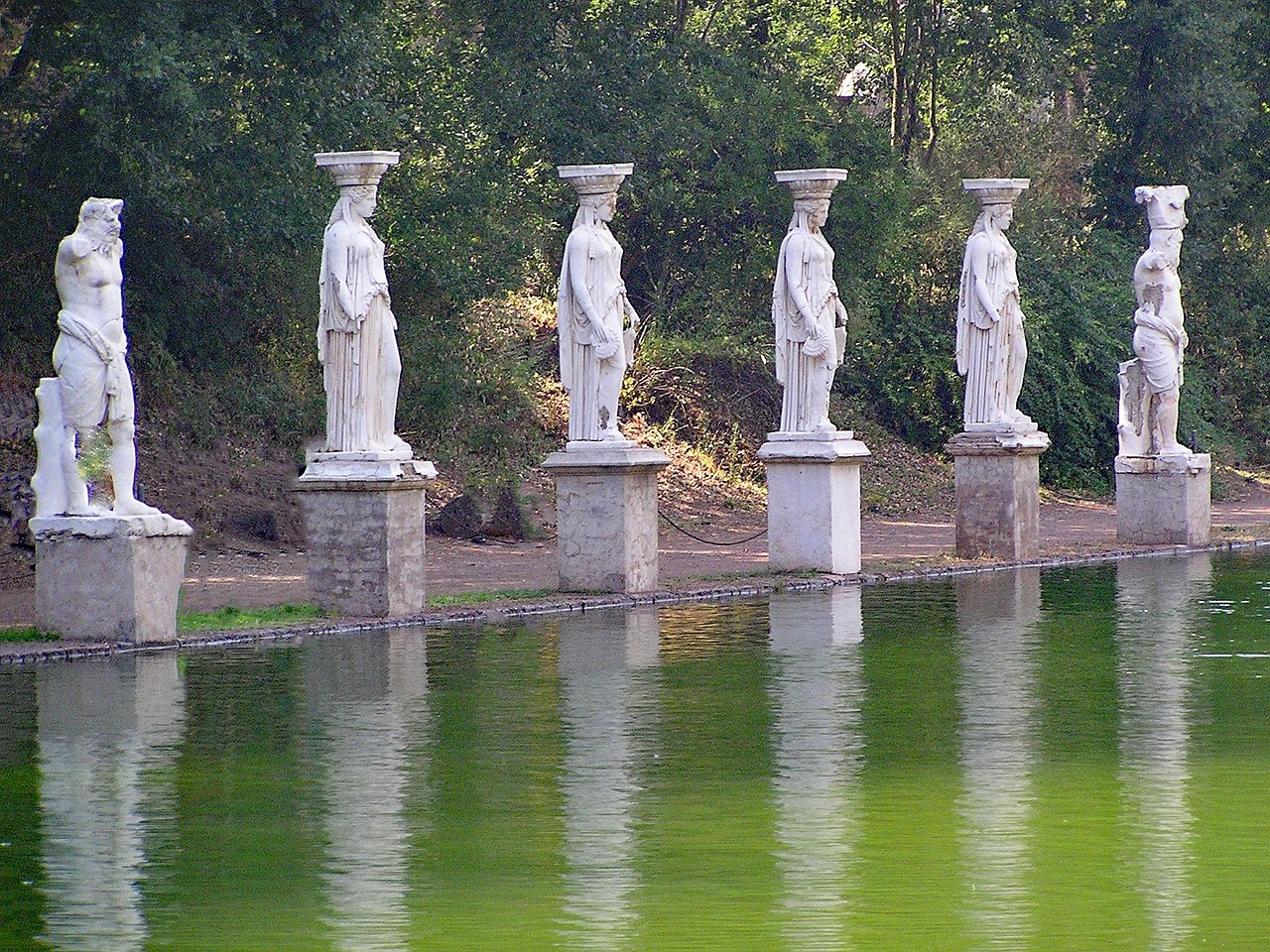
The charming town of Tivoli offers lovely restaurants where I enjoy lunch between villa visits. Look for places serving porchetta, a local specialty in the Lazio region.
For garden enthusiasts, I recommend extending your journey to include Villa Lante in Viterbo. Though it requires additional travel (about 90 minutes from Tivoli), its Renaissance gardens complement Villa d’Este beautifully.
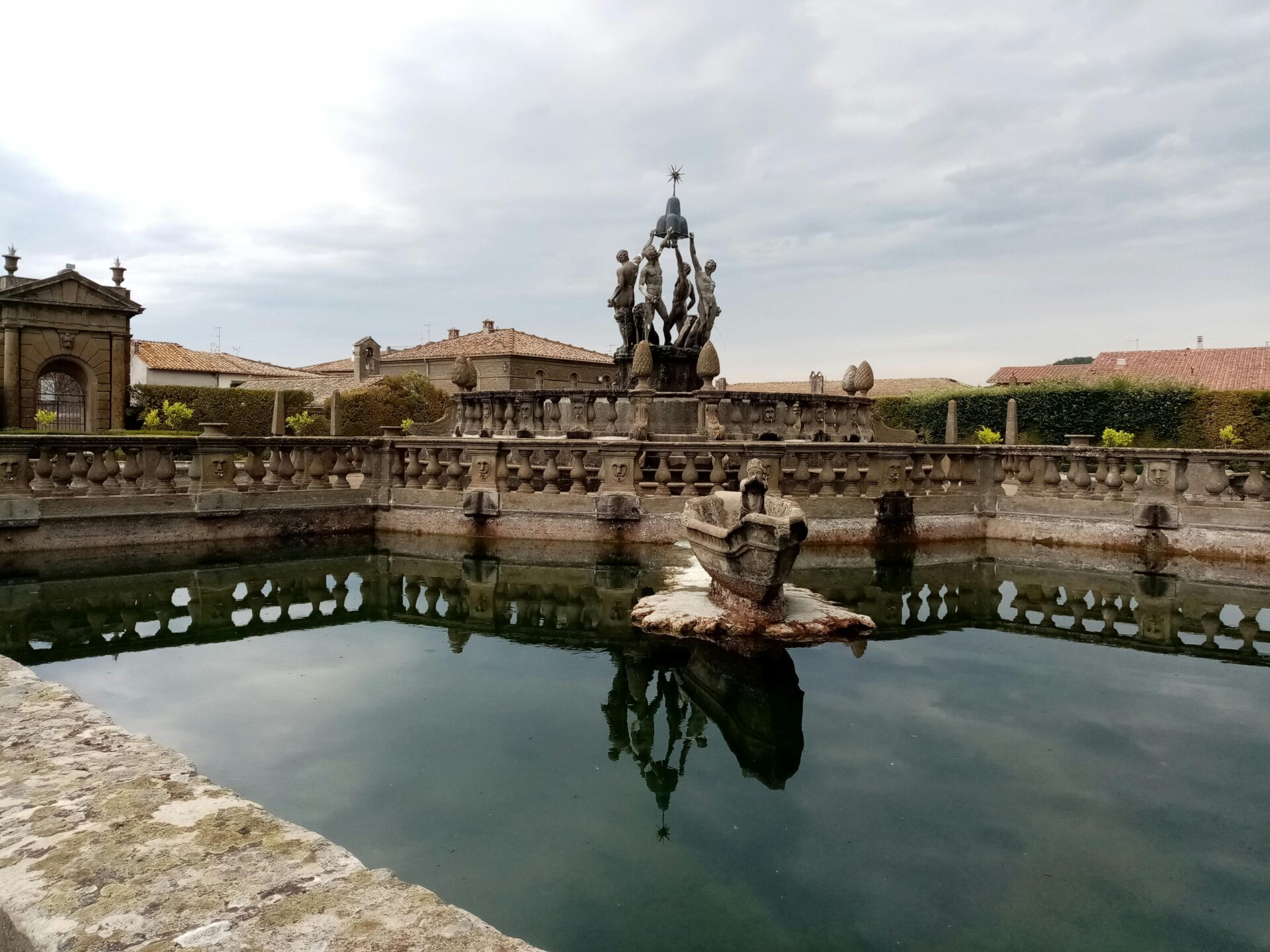
Accommodations in Tivoli allow for a more relaxed pace, but most visitors base themselves in Rome. I find staying near Tiburtina station most convenient for day trips to Tivoli and other destinations in Lazio.
The Influence of Villa d’Este on Worldwide Garden Design
Villa d’Este’s innovative water features and artistic vision transformed garden design across Europe and beyond. The gardens served as an influential model that architects and designers still reference today.
Comparisons with Global Renaissance Gardens
When I visited Villa d’Este, I was struck by how it pre-dates and influenced Versailles by nearly a century. The garden’s ingenious use of water pressure to create musical fountains and water games set a standard that other Renaissance gardens tried to emulate.

Unlike many other gardens of the period, Villa d’Este combined formal geometry with theatrical elements. I’ve seen similar approaches at gardens in France and England, though none achieve quite the same harmony between architecture and nature.
The garden earned UNESCO World Heritage status because it pioneered what they called “giardini delle meraviglie” (gardens of wonder). Its influence spread across royal estates in Europe, where designers copied its terracing techniques and hydraulic engineering.
Villa d’Este’s Impact on Modern Public Gardens
Walking through Longwood Gardens in Pennsylvania, I noticed clear echoes of Villa d’Este’s design principles. The water features, powered by modern technology, share the same goal of creating moments of surprise and delight.
Many public gardens today maintain elaborate fountain displays inspired by Villa d’Este’s water theater. The concept of creating garden “rooms” with different themes also traces back to this Renaissance masterpiece.
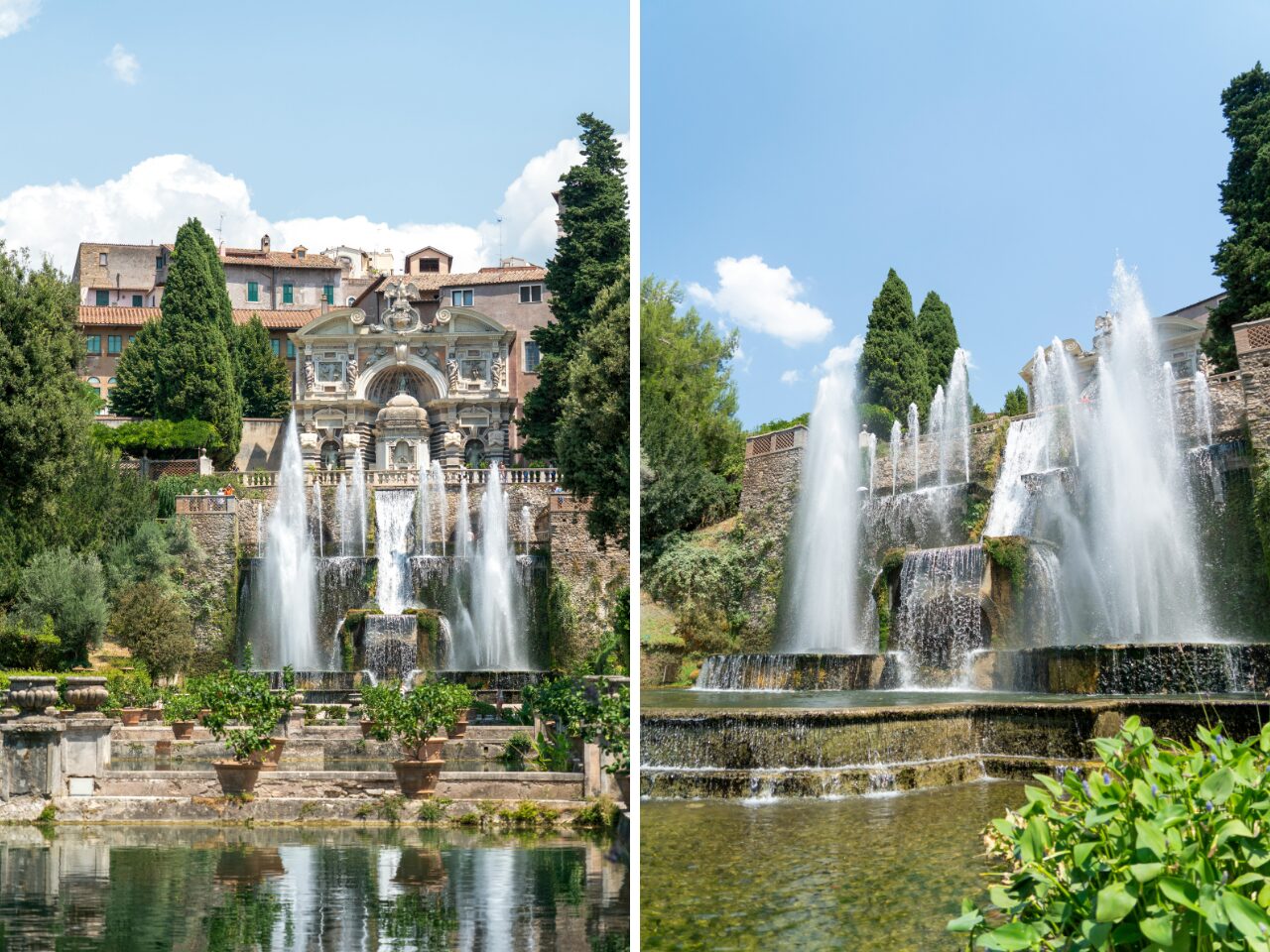
Villa d’Este’s integration of flowers with architectural elements has also influenced modern gardening. Contemporary garden designers frequently reference its use of water as both visual and acoustic elements.
The garden’s drainage systems and water management techniques were remarkably advanced for their time. Many public gardens around the world still follow similar principles for sustainable water use, though with updated technology.

